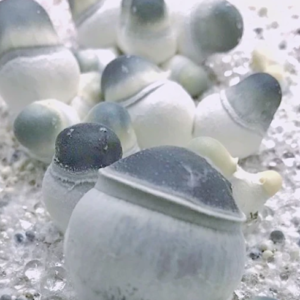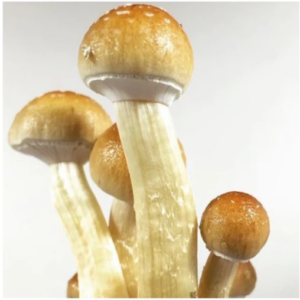Mushroom Spores Definitions and Taxonomy Classifications
Mushroom Strain Differences
Anyone who has spent even a modicum of time researching mushrooms will know that there are many, many different strains of so-called mushrooms.
➢But what are the differences between mushroom strains?
Mushroom Species, Strains, and Taxonomy
If they all just contain the psychoactive ingredient, then what’s the purpose behind mycologists developing and discovering all those different strains? Is the special experience any different? Are some strains “better” than others? What’s the difference between mushroom species vs. strains and what’s taxonomy?
Mushroom Strain Differences
- What a mushroom strain is (as well as what cross strains are)
- What’s a mushroom cross strain like the Hero cross-strain?
- The primary differences between mushroom strains
- Why different mushroom strains can offer different special experiences
- The characteristic differences between mushroom strains and how this impacts the appearance, size, and coloration of the fungi
- How mushroom strains can differ in terms of colonization and growth
- Why even microscopic spores can appear different if they’re from different strains
- How to test your taxonomical knowledge as an amateur microscopist with legal mushroom spores

Foundational Knowledge Explained: What is a Mushroom Strain? What’s a Cross Strain?
To understand the differences between mushroom strains, one must first understand the difference between a species and a strain.
A species is the most specific or granular rank in the taxonomic ranking system. The eight major taxonomic ranks, in order, are domain, kingdom, phylum, class, order, family, genus, and species.
So, for example, the name of the special mushroom can give us some insight into its place in the taxonomic hierarchy within the kingdom fungi.
Species of Fungi Have Different Strains
Species of fungi may have different strains. While they’re all the same species, these strains can differ from one another quite a lot. They’ll share some of the same characteristics—they’re all mushrooms, but they might be very different indeed when put under the microscope (figuratively or literally).
Mushroom Cross Strains Hybridization
Mushroom cross strains are created by hybridizing two different strains. The process is relatively complex and is notably different than cross pollination in plants—which one might argue is easier for botanists to achieve—but can offer some pretty amazing results when the mycologist manages to produce a successful lineage.
A cross strain is considered a success if the resulting fungi is capable of producing mature fruiting bodies (mushrooms) and sporulating. This means that the cross strain is capable of propagating itself, and can thus be grown again and again by mycologists or in the wild.
As we’ll see later in this article, some mushroom cross strains are very unique compared to other mushroom strains or even their own parentage!
Mushroom Potency in Strains
And potency for the various mushroom cross strains should also be considered.
Now that we understand the difference between a mushroom species and a strain and a cross strain, let’s discuss the key differences between mushroom strains:
The Key Differences Between Mushroom Strains
Mushroom strains, even though they’re all the same species, can be remarkably different from one another. Differences could include the following:
- A notable difference in the special experience when consumed, and not necessarily just in terms of potency (i.e., the concentration of in the fungi)
- Differing physical characteristics at maturity, such as size, shape, and coloration
- Different growth behaviors and requirements, such as speed of colonization or optimal temperature and humidity levels
- Microscopic differences in the spores produced by the fungi, detectable by amateur microscopists while studying mushroom spores in their home labs
Different Mushroom Strains Can Offer Different Psychedelic Experiences

Penis Envy Mushrooms and b+ Mushrooms
As you know, there is a psychoactive compound in mushrooms. The amount of this in a mushroom determines its potency. For example, something like the Penis Envy mushroom strain is more potent than B+ mushrooms —two different strains, but both members of the species.
Typically, those taking mushrooms—either recreationally in jurisdictions where doing so is legal or under the supervision of a licensed mushroom-assisted therapist, of course—will consume a dosage of 2-3 grams of dried mushrooms. Particularly adventurous psychonauts may consume a heroic dose of up to 5 grams.
There’s an old saying in the special community which comes to mind: “the mushroom chooses the dose.”
What that quote means is that it’s oftentimes difficult or impossible to tell precisely how much is actually concentrated in any one given mushroom. A person may get more or less introduced to their systems, even when consuming the same amount of dried mushrooms.
➢ What’s the best mushroom dosage?
Besides dosage, one metric of potency, however, is the strain. Some strains are known to, on average per mushroom, contain more than others. Using our previous strain examples, consuming two grams of B+ mushrooms would likely result in less being consumed than if the individual were to eat two grams of Penis Envy mushrooms.

The other factor to consider is that the mushroom itself contains many different elements and compounds which can contribute to the overall special experience. Mushroom assisted therapists and clinical trial researchers often use synthesized pure mushrooms, but some professionals are staunch proponents of what’s called “whole mushroom” therapy.
In other words, they propose that consuming the entire mushroom is an important and necessary part of the experience, both in terms of quality and for the patient to fully realize the benefits of mushrooms.
This whole fungi philosophy is likely why some people describe different special feelings and sensations while under the effects of different mushroom strains. Some strains may make a person feel spontaneous, creative, or energetic, while others might make them feel relaxed, contemplative, and dreamy.
Mushrooms From Different Strains Can Have Very Different Characteristics
Let’s take two cubensis mushrooms varieties for example, Golden Teacher and Albino Penis Envy:
Golden Teachers spores originate from one of the most famous mushroom strains in the world, is well known for its trademark golden coloration on its caps. The stems of this mushroom at maturity in the wild are long and winding. At a microscopic level, Golden Teacher spores are darker than other strains and have a mild potency at maturity.
Albino Penis Envy spores generate a decidedly ghostly appearance. The flesh of the fruiting body is pale and translucent. Mushrooms turn blue when exposed to oxygen, and this explains the pale blue coloration of this fungi. The stems are thick and squat, and the caps are wide and sit close to the top of the stem.
Microscopically, Albino Penis Envy spores are notoriously difficult to see under a microscope because, like the mature fungi, they take on a translucent appearance. As for potency, Albino Penis Envy (or APE as it’s commonly abbreviated) is extremely potent.
These two mushrooms varieties or strains couldn’t seem to be any more different than one another, right? And yet they’re the same species—it’s for that very reason that mushroom strains are so fascinating and desirable. A mycologist, microscopist, or other researcher has so much to study and enjoy from these remarkable organisms and all their collective diversity.

The Difference Between Mushroom Strains & How The Mature Mushroom Develops
Somewhat related to the way the mature fungi looks is how it develops. One of the biggest differences between mushroom strains is how the fungi grows.
The rate of colonization is an important factor to look at. Colonization, meaning how long a spore takes to become mycelium, and for that mycelium to begin spreading or colonizing a substrate, can differ greatly between different strains of mushrooms.
➢ Cubensis mushroom spawning and colonization guide.
Take two different strains as an example. One strain may be a slow colonizer, but with large fruiting bodies. Another strain might be an extremely fast colonizer, but produce smaller fruiting bodies. Of the fruiting bodies for each of these strains, one may be more potent than the other—and the actual physical size of the mushroom may have no correlation to the concentration of the content in the mushroom.
Other differences between strains insofar as fungal development is concerned are the optimal growth requirements of the strain. Some strains, particularly those originating in tropical areas, may require higher temperatures to be properly cultivated in jurisdictions where doing so is legal. Some strains like more moisture, and some require more airflow than others.
Under the Microscope, Mushroom Spores Look Different From One Strain to Another

As we briefly touched on earlier, one of the other key differences between mushroom spore strains is the fact that they look different. Yes, the fungi looks different at maturity, sometimes remarkably different, but the spores produced by different strains can look very different as well.
The example we gave previously was comparing Golden Teacher spores to Albino Penis Envy spores; Golden Teacher or GT spores are quite dark, and thus easily viewed and recognizable under a microscope. Conversely, APE spores are translucent, making them more difficult to see but quite distinct in their own right.


